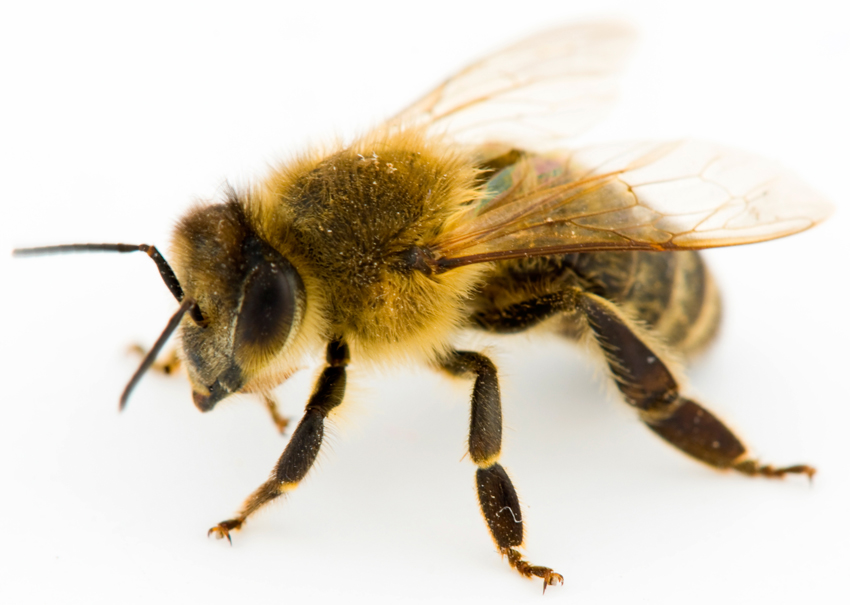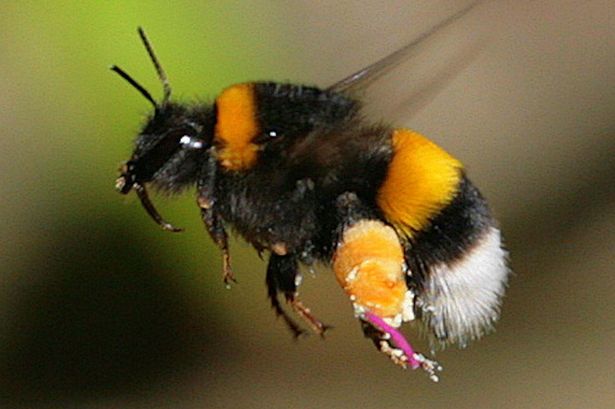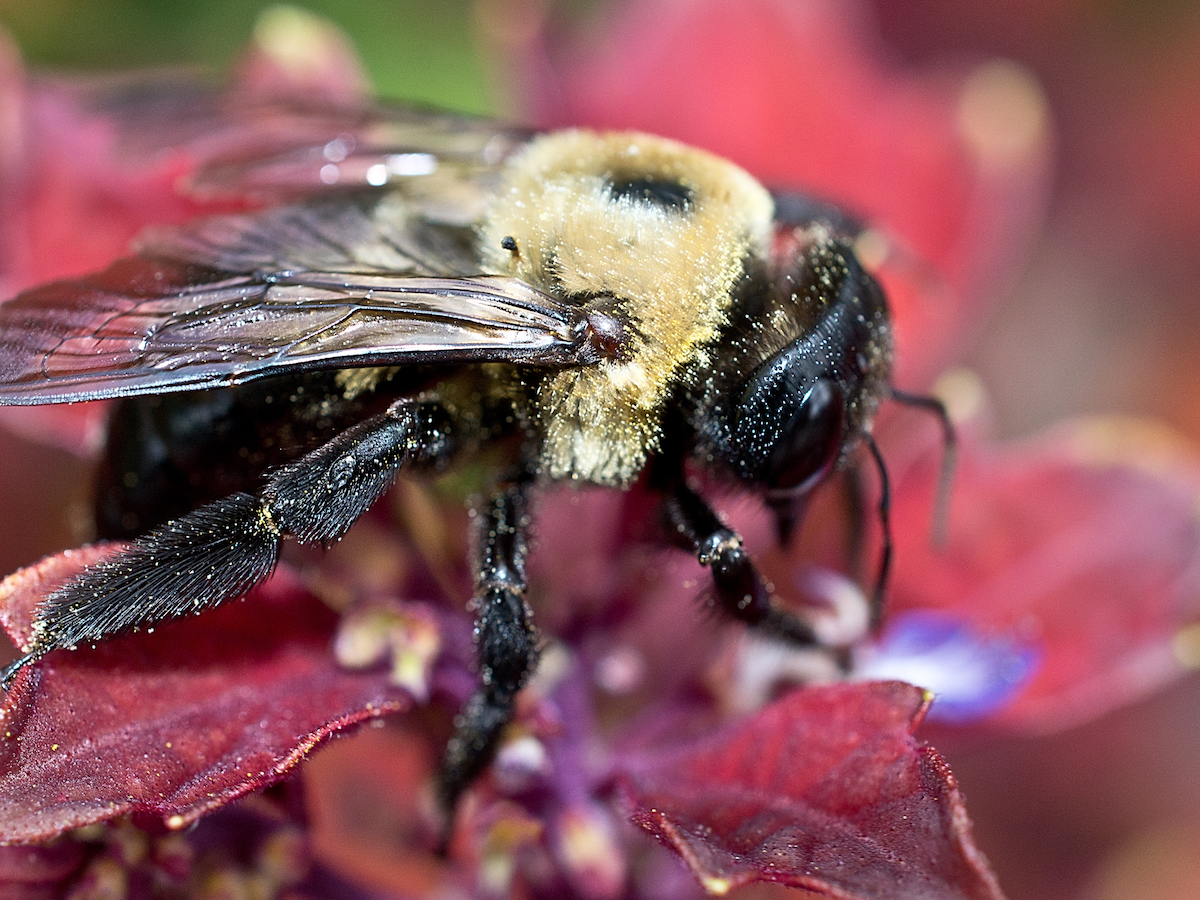
J & L Pest Control is a family owed business that has been practicing Integrated Pest Management (IPM) services since it was founded.
T (631)-605-9919
Email: jandlpestcontrol@gmail.com
J & L Pest Control
1090 Martinstien Ave.
Bay Shore, NY 11706

INTRODUCTION. Honey bees get their common name from the sweet yellowish to brown¬ish fluid they make from the nectar of flowers and use as food. Honey bees not only provide honey and wax, but as pollinators are of far greater importance. They are also responsible for a large share of insect stings, although many stings blamed on "bees" are actually done by yellowjackets. Honey bees are worldwide in distribution. The 2 most commonly encountered kinds/strains of honey bees in the United States are the common and rather docile European honey bee (EHB) and the much more aggressive Africianized honey bee (AHB). The EHB is found throughout most of the United States. The AHB invaded the United States from Mexico in 1990, and by 1/2007 was established in southern California, southern Nevada, Arizona, New Mexico, Texas, Oklahoma, west¬ern Louisiana, southern Arkansas, and central and southern Florida.
RECOGNITION. Adult worker’s body length about 1/2-5/8" (11-15 mm). Color usually orangish brown to sometimes black, gaster (enlarged rear portion of abdomen) broadly banded with orange and brown or brown and black; with body mostly covered with branched, pale hairs, most dense on thorax. Eyes hairy. First segment of hind tarsus enlarged, flattened. In addition, hind tibiae lack apical spurs; front wing venation with marginal cell narrow, parallel-sided, and 3rd submarginal cell oblique; hind wings with jugal lobe (lobe on rear margin near body). Barbed stinger present. Queens slightly larger, about 5/8-3/4" (15-20 mm) long, pointed abdomen extends well beyond wing tips, with smooth stinger. Males or drones robust, about 5/8" (15-17 mm) long, stinger absent.
Africanized honey bees look just like our “domestic” bees except for being slightly smaller. A specialist is required to identify specimens by genetics or measurements.
BIOLOGY. Honey bees are social insects and live as colonies in hives, with mature colonies of 20,000-80,000 individuals. Adults are represented by workers which are infertile females, a queen or inseminated female, and drones (males) which come from unfertilized eggs.
The entire population overwinters. There is only one egg-laying queen in the hive and she mates only once. She can lay as many as 1,500 to 2,000 eggs per day, and may live as long as 5 years. The queen produces many pheromones, mostly from her mandibular glands, which regulate among other things the production of new queens and inhibit development of worker ovaries. The young workers care for the young or brood, build the comb, provide hive ventilation, and guard the hive entrance. Older workers serve as foragers to gather pollen, nectar, and propolis or bee glue. Workers live only about 5 to 7 weeks during the summer but those emerging in the autumn, over winter. Drones (males) appear periodically and are short lived, usually living only a few weeks.
Honey bees swarm primarily when the colony size gets too large for the available hive space or the queen begins to wane or fail. New queens are produced and the old queen leaves with a large number of workers. Our common European honey bee colony usually swarms only once each 12 months. Africianized honey bees swarm as often as once every 6 weeks and can produce 2 swarms each time.
HABITS. Honey bees are not aggressive, and do not search for something to attack. Instead, they are defensive and will attack only whatever seems to threaten the colony. Swarms first move to a temporary site such as a tree branch. The swarm will usually remain here for about 24-48 hours until permanent quarters are located, and then moves on. Permanent quarters may consist of a bee hive, hollow tree, hollow wall, attic, etc., typically some place which is sheltered from the weather.
Bees in a swarm are very docile and not likely to sting because they harbor no food stores or young and therefore, have nothing to defend. Likewise, honey bees encountered away from the hive are unlikely to sting unless severely provoked, like stepping on them. However, if the hive entrance is approached, the guard bees can become very aggressive; do not approach hives without proper protection. Worker bees have barbed stingers and when used, the stinger, poison sac, and associated tissue are torn from the body. If the stinger is not removed immediately, muscle contractions will drive the stinger deeper and deeper into the skin and there is greater time for toxin injection. In addition, the stinger gives off a pheromone which attracts other bees and induces an alarm and attack behavior. Therefore, immediate removal with a fingernail or knife blade is recommended; squeezing only forces more venom in. The AHB will pursue the intruder/victim for up to 328 ft (100 m) whereas, the EHB will pursue for only about 33 ft (10 m).
CONTROL. For walls, first locate the entrance/exit(s) being used. Next, the colony’s nest should be located because the nest can be far enough away from the entrance that entryway- applied insecticides will not reach the bees. The nest can best be located at night by tapping on the walls in the area of buzzing and listening for the loudest sound. Also, honey bees keep the center of their nest at about 95°F (35°C) which will warm the wall enough such that it can often be detected with one’s hand. Seal the application hole immediately after insecticide introduction. For attics, direct application is required. The next day the dead bees, comb, and honey must be removed or else as the wax deteriorates, there will be a strong honey and dead bee odor, the honey will often seep through the plaster walls, and/or this debris will attract other insects and mice.
Please call us today for a free estimitate for the removal and or treatment of these honey bees.

NTRODUCTION. The common name of bumble bee possibly comes from their rather large, clumsy appearance and/or the buzzing sound they make as they fly. In the urban setting, bumble bees do not usually nest in structures but are of concern because of their abundance around the many flowering plants typical of yards, and because they can sting. There are about 51 species (45 in Bombus, 6 in Psithyrus) in the United States and Canada, and as a group they are found throughout the United States.
RECOGNITION. Adult worker body length about 1/4-1" (6-25 mm), queens about 3/4-1“ (17-25 mm) long; robust in form. Color black with yellow (rarely orange) markings; with overall fuzzy/hairy appearance, including top surface of abdomen. Head with distinct space between base of compound eye and base of mandible. Antenna 12-segmented in female, 13-segmented in male. Hind tibia with apical spurs. Front wing with 2nd submar¬ginal cell more or less rectangular, about as long as 1st submarginal cell. Hind wing lacks a jugal lobe (lobe on rear margin near body). Male abdomen with tip rounded; female abdomen with tip pointed, stinger relatively smooth, with small barbs. In addition, female Bombus with hind tibia modified into pollen basket (surface bare and polished, marginal hair fringe) whereas, Psithyrus lacks pollen basket, hind tibia slender.
Typically, only inseminated queens over winter and do so underground. In the spring, the queens of Psithyrus species wait until the Bombus nests are moderate in size and then parasitize them. The Bombus queens select a suitable subterranean cavity or surface grass clump as a nesting site. Then the Bombus queen fashions a honey pot of wax scales near the nest entrance into which she regurgitates nectar. Next she makes a pollen clump on the nest floor and lays 8-10 eggs on it. The queen will periodically add pollen and nectar to the peripheral edges of the clump, and eventually more eggs. Developmental time (egg to adult) is 16-25 days, with 4 larval molts. Workers live about 2 weeks. Most first brood workers are small due to nutrition. The queen will increase the number of eggs laid as the number of workers to care for them increases. During the summer, parasitism may eliminate up to 50% of the colony's workers each week. However, a mature bumble bee nest ultimately contains about 50-400 bees at any given time; the largest known nest contained 756 bees and 385 brood (larvae and pupae).
The nest temperature is regulated to about 86° F (30° C). This thermoregulation is accomplished by the bee relaxing the 3rd axillary muscle to its wings which unhinges the wings from the main power-producing thoracic muscles. Then contractions of these large muscles produces body heat without wing movement. In the late summer only males (drones) and new queens are reared in the nest. Once these new females emerge, they mate and find a suitable place to over winter. The males, workers, old queen, and any virgin new females die with the onset of cold weather.
HABITS. Depending on the Bombus species, the overwintering queen will select an appropriate nesting site the following spring. The queen of some Bombus species locate a dark cavity at least 3/4" (2 cm) high by 1 1/8" (3 cm) wide containing fine plant fiber; such a nest is usually underground and often an abandoned mouse nest. Queens of other Bombus species select a dense clump of grass on the surface for a nest, adding grass on top. The queens of Psithyrus species are all parasitic on Bombus nests, so they bide their time until the Bombus nests are moderate in size and can therefore support them. They then enter the nest, kill the Bombus queen, and take over the nest using the Bombus workers to care for her young. Bombus queens of later emerging Bombus species sometimes also parasitize the nests of earlier emerging Bombus species.
Bumble bees foraging for nectar fly at 7-12 mph (11-20 km/hr) and spend only 2-4 minutes inside the nest between trips. Probably they will travel at least 3 mi (5 km) if necessary for nectar. They orientate by the sky’s polarized light via their 3 ocelli, so they can forage before and after light when objects and landmarks are not visible. They use their theromoregulation procedure to warm up flight muscles before the sun rises and to also forage when temperatures are below 50° F (10° C; lowest observed flight at 26° F/-3.60 C) whereas, most bees stop foraging at 61° F (16° C). Each worker forages independently, and bumble bees never exchange food. Old cocoons are used to store both pollen and nectar. Only enough food (honey and pollen) for a few days is stored at any given time which helps discourage nest predation by skunks, foxes, etc. Defense is usually accomplished using their relatively smooth stingers that can be used over and over. Some species will also spray feces, and some cover the intruder with regurgitated honey. People sensitive to insect venom should exercise care around bumble bee nests.
CONTROL. Bumble bees are considered beneficial insects because they pollinate the flowers of many plant species. However, if their nest is located in or close to an occupied structure or recreational area, then control is warranted. During the day find the location of each nest by observing where the bees disappear into the ground, grass clump, or structure. At night using background light and while wearing a bee veil, apply an appropriately labeled pyrethroid pesticide. Dusts work best when applied to an area 6" (15 cm) around the nest entrance. For structural nests, treat with dust or aerosol but do not seal the entrance. Structural nests should be either retreated with a long-lasting repellent material and sealed or the void opened up and cleaned out within 1-2 days to prevent future problems with dermestid beetles, spider beetles.
Please call us today for the control of these bumble bees.

INTRODUCTION. Carpenter bees get their common name from their habit of boring into wood to make galleries for the rearing of young. These are worldwide in distribution with 7 species occurring in the United States.
RECOGNITION. Adult body length about 1/2-1" (12.5-25 mm); robust in form, resembling bumble bees, but with top surface of abdomen largely bare and shining. Hind tibiae with apical spurs. Front wing 2nd submarginal cell triangular; hind wing with a small jugal lobe (lobe on rear margin near body).
BIOLOGY. Carpenter bees are not social insects and do not live in nests or colonies. The adults over winter, typically in abandoned nest tunnels. In the spring, the survivors emerge and feed on nectar. Then mating begins and extends into nest-construction time. The mated female may either reuse an old gallery, construct a new one by lengthening an old gallery, bore an entirely new one, or extend a gallery from a common entrance hole. The female typically bores a circular hole (same diameter as her body) straight into the wood across the wood grain for a distance equal to her body length. Then the gallery takes a right-angle turn, usually with the grain of the wood and parallel to the outer longitudinal surfaces. New galleries average 4-6" (10-15 cm) long but galleries developed/used by several bees may extend up to 10 feet (3 m). Additional galleries may be excavated above/below earlier galleries resulting in 2 or 3 tiers/levels of galleries.
The female provisions each gallery cell starting at the closed end of the gallery with a mass of pollen and regurgitated nectar upon which she lays a single egg. This portion of the gallery is then sealed off with a chewed wood-pulp plug, making a chamber or cell.
This process is repeated until a linear series of 5-6 cells is completed, about 1 cell per day. Developmental time (egg to adult) for the carpenter bee is about 36 days.
CONTROL. Carpenter bee control consists of treating each individual gallery with an appropriately labeled pesticide. Dusts, wettable powders, microencapsulated, and aerosol residual formulations work best. Aerosol injection systems are probably the most efficient and safest way to treat galleries, especially when on a ladder.
Please call us today for a free quote for the control of these Carpenter Bees.
